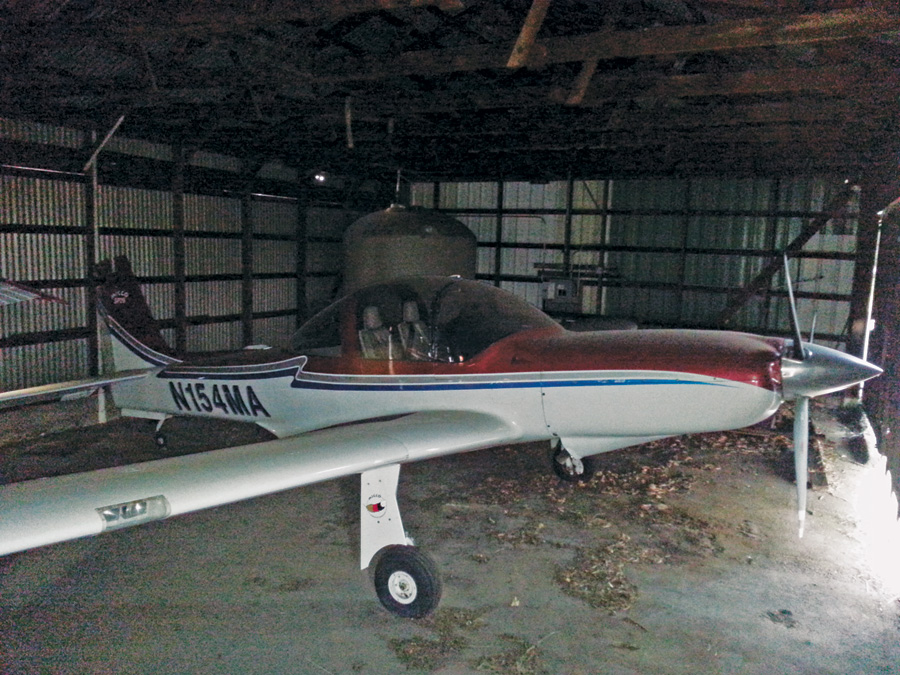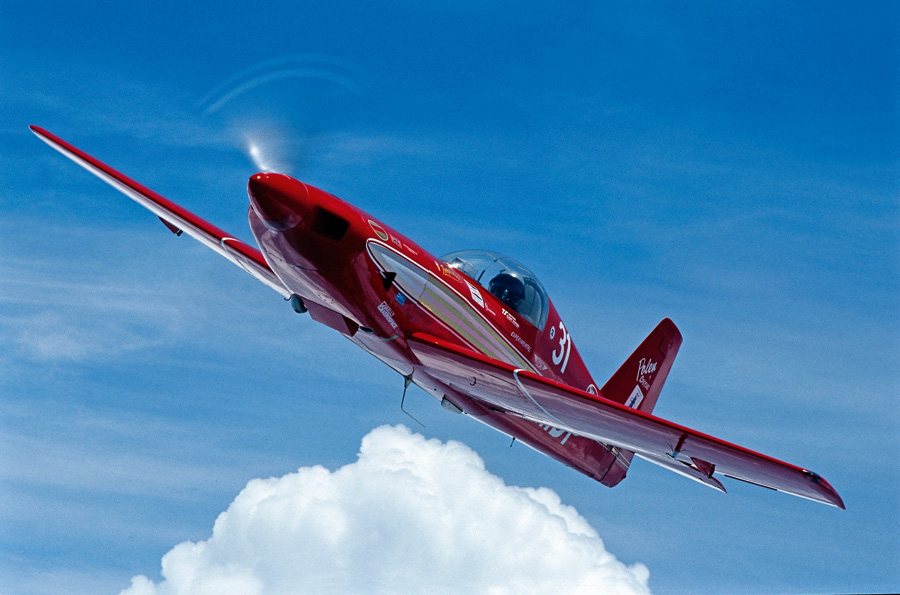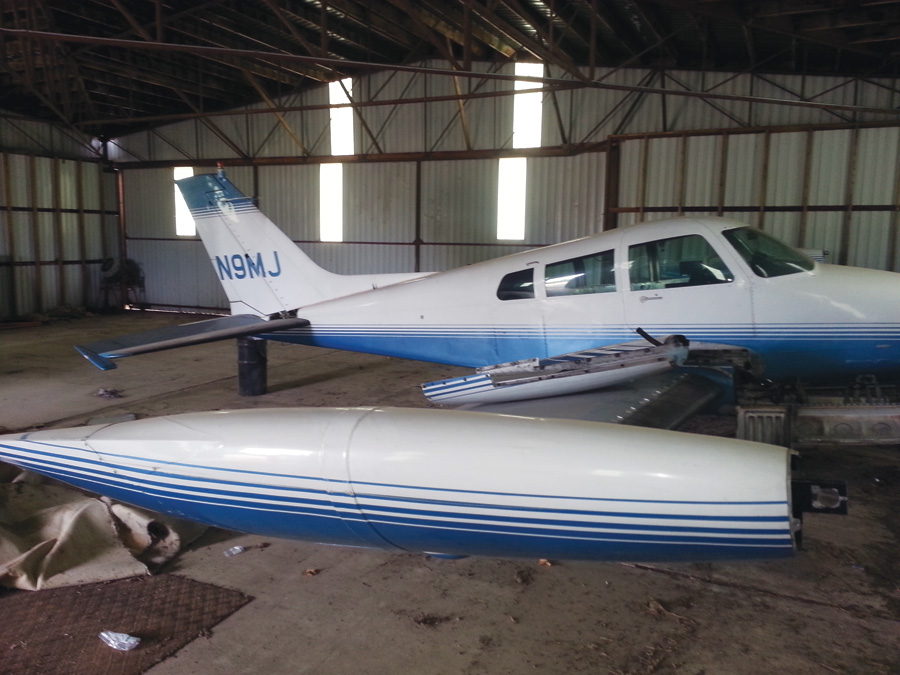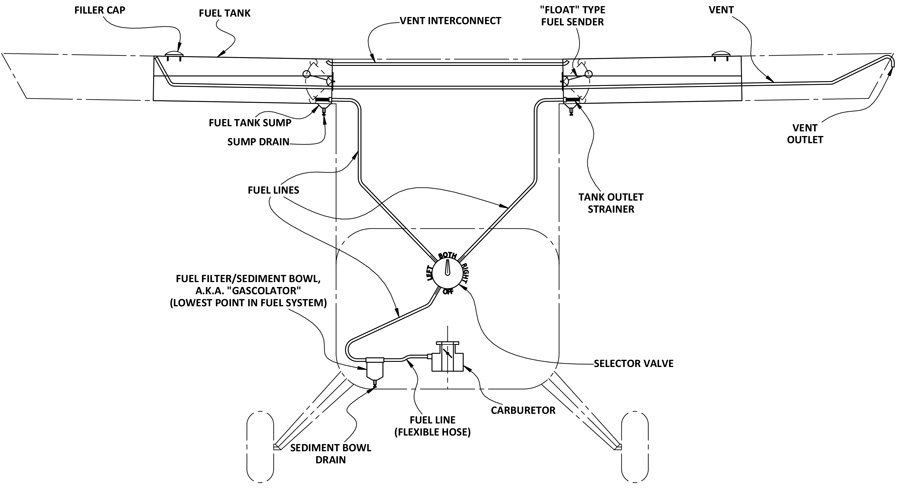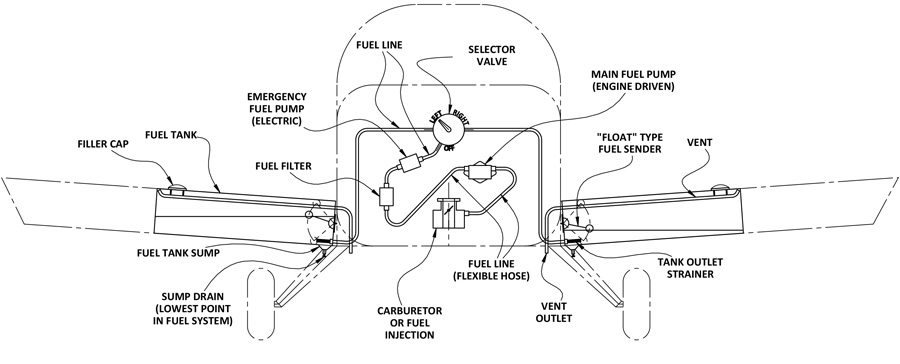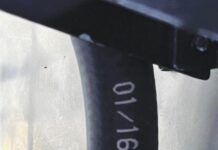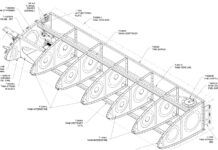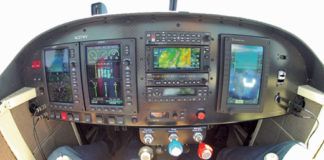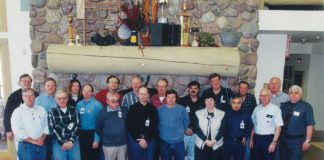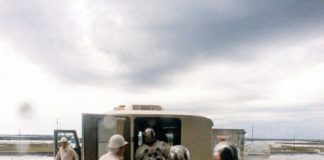The fuel system is surely the least appreciated of all systems on a light aircraft. A well-designed fuel system is so reliable that pilots rarely give it more than a passing thought, and, being deceptively simple, aircraft builders often fail to recognize it as the single most critical system in the aircraft.
If asked what powers an airplane, aircraft builders and pilots think primarily about the engine. In reality liquid hydrocarbon fuel powers our airplanes, and the engine is merely the device where the heat created by burning the fuel and atmospheric oxygen is turned into shaft power. The fuel system does the work of storing, supporting, transporting, and conditioning the fuel so that it can be transformed into useful shaft power by the engine. The fuel system must function, without fail, no matter the attitude of the aircraft, as well as in all possible extremes of temperature, altitude, and humidity. Besides such “normal operation” considerations, the fuel system must also contain and isolate the fuel during emergencies such as landing gear failure or a full-blown crash. A properly designed fuel system is absolutely reliable, simple to operate, easy to inspect, and accessible for maintenance. Few realize that the fuel system is as essential to flight as the engine, and it is as decisive in crash survivability as occupant restraint.

Given the importance of the fuel system to flight safety, one could reasonably expect that homebuilders would be about as eager to change the design of a proven fuel system design as to make modifications to primary structure. Amazingly, fuel system failures, due mostly to improperly designed changes, remain a leading cause of accidents among Amateur-Built aircraft. In fact, the very first recommendation made in the NTSB’s May 22, 2012 Safety Study on Experimental/Amateur-Built Aircraft is to define aircraft fuel system functional test procedures and require applicants for an airworthiness certificate for an Amateur-Built aircraft to conduct that test and submit a report of the results for Federal Aviation Administration acceptance.
The goal of this article is to promote a better understanding of fuel system functionality. It is desired that a deeper knowledge of fuel system design will result in improved safety because it will lead to more careful consideration before any fuel system changes are made.
Overall Function
A fuel system’s basic functional requirement is to provide adequate fuel flow and fuel pressure for proper engine operation in the attitude most critical with respect to fuel feed and the quantity of unusable fuel. For the majority of light aircraft, the most critical attitude for fuel flow occurs during a full-power climb at VX (speed for best angle of climb) from sea level with the aircraft lightly loaded. In contrast, the fuel system for a fully aerobatic aircraft must be able to provide fuel to the engine even when flying inverted, straight up, straight down, knife-edge, or any attitude in-between, so this presents a much greater fuel system design challenge.
The large wing fuel tanks make this Micco SP-26 unable to meet the spin recovery requirements for an aerobatic aircraft.
In the same way that aircraft structure must be designed to be “more than strong enough,” so also must a fuel system be designed to provide the required amount of fuel flow plus a safety margin. If the fuel system uses gravity to move the fuel from the tank to the engine, then the flow rate must be 150% of the engine’s takeoff power fuel consumption. For a fuel system that uses a pump to move the fuel, the flow rate must be 125% of the fuel consumption of the engine at takeoff power.
The fuel system must be free from vapor lock when using fuel at its critical temperature with respect to vapor formation. Vapor lock is a condition in which the fuel vaporizes in a fuel line (or other component downstream of the tank) and interrupts proper flow of fuel to the engine. Avgas at 100 F must not vaporize at a pressure of less than 5.5 pounds per square inch. The vapor pressure of “summer blend” auto fuel is higher than that of avgas and “winter blend” auto fuel’s vapor pressure is higher yet. As more new aircraft are using engines designed for operation on auto fuel, this requirement has become more relevant than ever before.
The fuel carried in an aircraft has a considerable amount of stored energy, and a key function of every fuel system is to contain the fuel not only during all phases of normal flight, but also during landing mishaps and crashes.
Aircraft Design and Fuel System Integration
Beginning early in the conceptual design phase of any powered aircraft, the fuel system is a major consideration. The intended mission of the aircraft dictates the amount of fuel that must be carried by the aircraft and supported by the structure. Because the weight of the fuel can be a significant percentage of the takeoff weight and is in constant flux during any given flight, the placement of the fuel in the aircraft and its impact on the center of gravity must be considered.
To minimize the difference in flying qualities between tanks full and tanks empty, the designer seeks to locate the fuel as close to the center of gravity as possible. Having multiple tanks in a system affords the designer greater flexibility in finding the optimum location in the aircraft for the fuel. It is generally most advantageous for reasons of structural efficiency, space utilization, and crashworthiness to place fuel in the wing. Two wings, two tanks… it makes sense and this is why most aircraft have more than one fuel tank.
Aircraft designers must also consider the inertia of the fuel carried by the aircraft as this has an effect not only on performance, but on handling qualities and spin behavior as well. The farther away the fuel is placed from the center of gravity of the airplane, the greater the impact. One of the more common “improvements” that homebuilders make to an established design is to increase fuel capacity. Many builders think that enlarging the fuel tanks is a harmless change, but spin behavior and spin recovery will be adversely affected by the increased rolling and yawing inertia that comes with increased fuel mass. The fuel system design of the Micco SP-26 illustrates this point. Miccos with two tanks in each wing, inboard and outboard, are acrobatic category aircraft because they can fly with the outboard tanks empty, whereas Miccos with a single tank in the outboard portion of the wing are certificated as utility category aircraft. The inertia of the fuel in the outboard wing tank degraded spin recovery to the point that it couldn’t meet the FAR Part 23 acrobatic category requirement.
Another important consideration is how the mass of fuel contained in a wing or stabilizer changes the natural frequency of vibration in bending and torsion. The amount of fuel and its location may change the critical flutter speed, and this is why a proper flutter analysis takes the presence of fuel into account. An interesting case study involves a well-known homebuilt aircraft, the Polen Special. A team from the Aerospace Engineering department at the University of Texas at Austin performed a flutter analysis to determine the effect of carrying additional fuel in the wing. The analysis results showed that, for the proposed tank configuration, flutter speed decreased significantly as internal fuel was added to the wings. (A summary of the results can be found by doing a search on “Polen Special flutter analysis.”)
In contrast to storing fuel internally, many light aircraft carry fuel external to the wing in tip tanks, which enable placement of fuel well forward on the chord of the wing. This configuration allows fuel to be carried without a significant change in flutter speed. The photo of the tip tank on a Cessna 310 illustrates the forward location of the fuel.
Crashworthiness
A well-designed fuel system is also a crashworthy fuel system. Appendix C of the Small Airplane Crashworthiness Design Guide is a fuel system design checklist. The entire document (414 pages long!) can be downloaded and should be required reading for every aircraft designer or for anyone contemplating a modification to an existing fuel system. In a nutshell, a crashworthy design prevents post-crash fire by eliminating the spillage of fuel and by controlling sources of ignition. Some of the key recommendations pertaining to fuel system design are:
- To locate fuel tanks as far as possible from anticipated impact areas (such as wing leading edges) as well as large weight masses (such as engines or batteries) and primary ignition sources (such as exhaust systems or batteries).
- That fuel tanks should be located where there is little chance that a collapsing landing gear leg will puncture or breach the fuel tank.
- To design fuel tanks and fuel lines such that they can displace in the airframe structure without tearing or inducing leaks. For the fuel tank, special attention should be given to the area around the filler, points of fuel line entry and exit, the quantity indicator, and the tank to structure attach points.
The amount of fuel carried in the aircraft is one of the earliest and most influential conceptual design considerations, and the weight and placement of the fuel either directly or indirectly affects how every other part of the aircraft is designed. For existing designs, there are a number of basic design considerations that should be addressed before additional fuel tanks are added or existing tanks are enlarged.
Next time, we’ll continue looking at fuel systems, but with a focus change from overall fuel system functional requirements and “whole-airplane” design considerations to specific design requirements applicable to each part of the fuel system.


